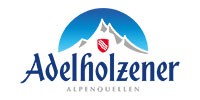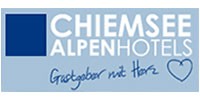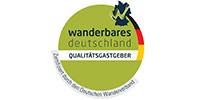Hiking with snow shoes in the Chiemsee-Chiemgau region
A natural experience of a special kind
The holiday region of Chiemsee-Chiemgau stretches from Wendelstein in the Inn Valley in the west to the Berchtesgadener Berge Osten, or Reit im Winkl in the south of the Chiemgau. Beautiful snow-shoeing tours can be found on the high plateau of the Samerberg, in Aschau im Chiemgau, Schleching, Unterwössen, Reit im Winkl, Ruhpolding and Inzell. Everything about 25 - 50 km away from the SeeHotel Wassermann.
Snow shoeing Chiemsee-Chiemgau
Snow shoeing of Frasdorf - round route over Schmiedalm and Soilach
Snow shoeing to the Wendelstein and Kesselwand
Skiing and snowshoeing in the Nature conservation area Geigelstein , PDF (1,6 MB) oder from Schleching
Snowshoe hike to Bründlingalm am Hochfelln
Snowshoe hikes in the snow-capped Inzell from Adlgaß to the Bäckeralm
Snowshoe hike from Reit im Winkl to the Straubinger Haus, or the Hausbergrunden, or the Klausenberg
Here are a few tips to help you get started:
Pull yourself warm, preferably in several layers so you can adjust the insulation at any time to the conditions.
If possible, wear waterproof, breathable shoes with good insulation effect, preferably alpine boots or winter boots with a good grip. In deep snow, leggings hinder the penetration of moisture.
A hat and gloves keep warm body parts warm, over which otherwise a lot of the heat is lost.
Take enough to drink, because in the case of sweating activities, the loss of liquid is enormous. Insulated drinking systems make drinking on the road particularly easy.
Sun protection for all exposed body parts and good sunglasses are important in winter .
Telescopic poles give better stability in difficult terrain and deep snow and facilitate the advancement.
Alpine security:
Always carry an LVS unit, an avalanche blade and a probe with you. In addition, you should take a bivouac and first aid kit. An accurate map as well as a compass and altimeter are essential for the more difficult orientation in the winter. Observe the general hazards in alpine terrain.
Guided snowshoe hikese
The local ski schools offer guided snowshoe hikes from December to April, where you can experience the winter Bavarian Alps from a unique side, which is otherwise only reserved for touring skiers, in a completely harmless way, and for every condition strength.
Hiking with snow shoes in the Chiemgau
It does not take much to convince yourself of snowshoes!
Snowshoe hikers in complete silence and a landscape covered with glittering snow arouses the longing for adventure. The own breath and the crunch of the snow spread a feeling of being alone.
It does not take much to convince yourself of snowshoes!
Keep in mind, however, that you are never alone on your
snow-shoeing trips, but rather share the forests and mountainous areas with
domestic game animals, which are very retreated during the severe winter months,
so that the cold nights and the low supply of nutrients can be easily overcome
by next spring . Especially during the winter months it is as little energy as
possible to consume the wild animals. Disturbances cause stress and sometimes a
panic-like escape behavior, which leads to high energy consumption in the deep
snow. In the worst cases this can lead to the death of a wild
animal.
Therefore, on your snowshoe hikes, you should get to know the
habitats of wild animals and thereby develop an understanding of their way of
life. Behave in the woods and mountain areas, observe the animals only from a
distance, avoid feeding and do not follow any animal trails. Avoid twilight and
dusk on your snowshoe hikes, as the animals need special rest.
Cross forest
areas on conventional routes, avoiding, in particular, afforestation areas and
virgin forests. A particularly sensitive ecological area is the forest border,
because here the Birkhuhn finds its home. Therefore, cross the forest by the
shortest route and keep away from groups of trees. Wells and blown backs and
ridges are the home of the snow grouse, where there is snow in the snow Ice cold
storms and feed on the other side of the barren dwarf shrubs. Due to its
exceptionally good camouflage, the snow fowl escapes very late, but consumes a
great deal of vital energy. By observing some rules, we help the animals to win
the winter well, and at the same time we can snowshoe walkers with a clear
conscience enjoy our tours in an enchanted winter world.







